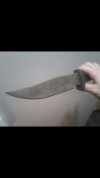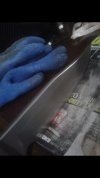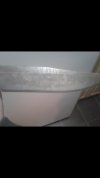You don't know that. And neither do I, since neither of us is a chemist.
I can just report on what happened, which is the following:
- I stripped the DS6 (with original dark blue coating)
- underneath came out a dark coating, much like after stripping my Axe Hammer
..... - nobody here
actually seems to know what that is. It could be decarb, or
"blue-black oxide scale that forms at temperature above about 450C" (definition see
https://www.bladeforums.com/threads/what-is-decarb.711078/#post-7792075)
..... -
 skyhorse
skyhorse
's report on stripping his INFI knife and leaving it neglected for a long time without rust forming is very interesting. The BF reports on "decarb" rust that I found refer to stripped SR101 blades
- I sanded the DS6 and got most of the "decarb" off (for the results see post #60,
https://www.bladeforums.com/threads...strippers-lately.1784548/page-3#post-20772033)
- I dunked it in Alumabrite for several hours.
..... - it formed a black "goop" while doing it's chemical reaction; That goop needed to be rubbed off.
..... - underneath is a grey steel surface. The Alumabrite smoothened out the surface somewhat, my (fine) sanding scratches are gone.
..... - the metal surface is homogenous now, meaning the Alumabrite affected both the bare metal, and whatever remained of the "decarb" for example in the grinder's "chatter" line that you see on one side.
And that's it. Report complete.
Roland.















